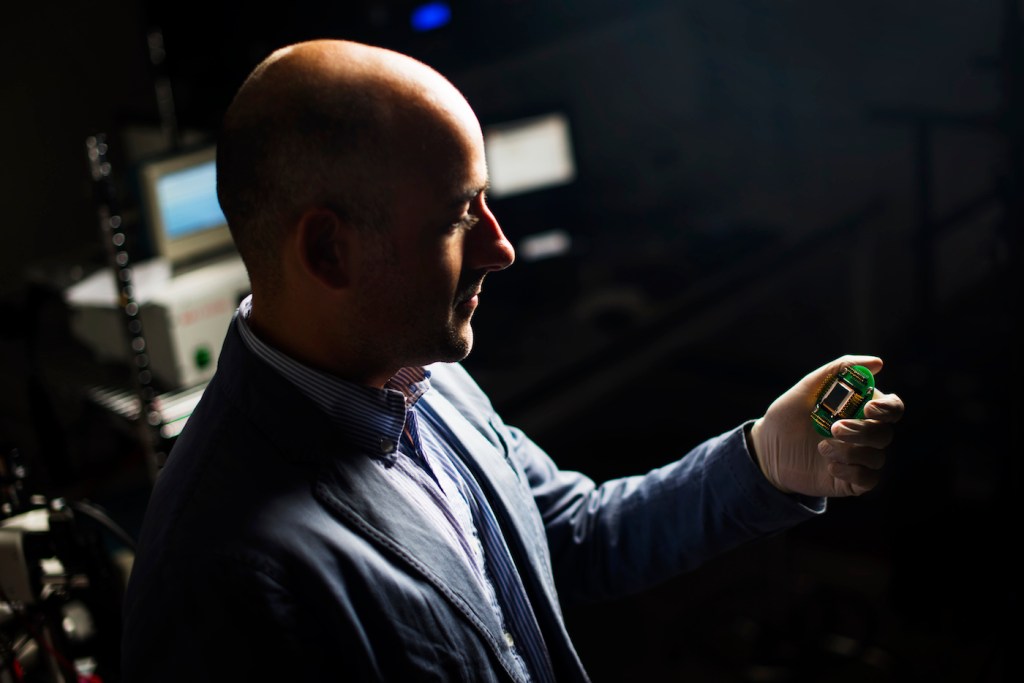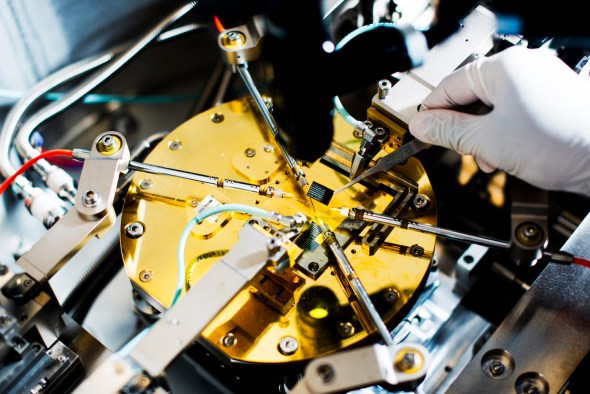New ‘sleeping’ sensors could save costs, make warzones safer

When stationed in dangerous, rural areas, the last thing soldiers should worry about is replacing a dead battery. That’s one reason why the Defense Advanced Research Projects Agency, or DARPA, is interested in developing devices that use virtually no power at all.
DARPA has a vision to employ a network of miniaturized sensors in remote locations. But the cost of maintenance would be tremendous, unless the sensors could last many years on very little power.
Matteo Rinaldi, associate professor of electrical and computer engineering at Northeastern, has just the answer. He was awarded a grant to build a new type of sensor that consumes no power whatsoever in standby mode. When the sensor recognizes a specific infrared wavelength signature, it uses the tiny amount of power contained in the infrared radiation to wake itself up. Then it triggers an “output wake-up bit,” or a voltage signal, that could alert soldiers or others to an event of interest, such as an approaching vehicle.
Rinaldi’s sensor design is described in a new paper, published last week in Nature Nanotechnology. It consists of a tiny, micromechanical switch that controls the connection to a battery. Only when the switch is activated by the infrared radiation does it move to close the gap between itself and its battery, triggering the wake-up signal.
The switch can be designed to detect very specific events. For example, the exhaust plume of a car has a certain signature of infrared radiation. To pick up on that signature, Rinaldi and his team patterned a correlating arrangement of tiny patches of gold on the surface of the switch. When the patches are exposed to the correlated infrared radiation signature, they absorb its energy, which heats up the device.
The switch contacts are supported by beams made out of a two-material stack. “When the temperature of this structure increases, one material expands more than the other, and therefore the beams bend,” Rinaldi explains. That bending allows the switch to make contact with the battery and spit out a signal.

To pick up on a specific infrared signature, Rinaldi arranged a correlating pattern of tiny patches of gold on the surface of the switch. When the patches sense the heat from the infrared radiation, the switch moves to close the gap between itself and the battery, triggering a signal. Photo by Adam Glanzman/Northeastern University
Current sensors are not “smart” enough to detect an event of interest while dormant. They require a constant power source. Rinaldi’s sensor would allow DARPA and other organizations to deploy large networks of sensors that continuously monitor the environment, without consuming any power in standby mode. This could make warzones or other hazardous locations much safer, and the sensors would be much less expensive to maintain.
The sensor design can also be tweaked to recognize other signals. For example, they could be made to detect certain chemicals, specific wireless radio frequency signals, or magnetic fields.
Rinaldi imagines sensors embedded all over cities, to make everything—from buildings to transportation systems—smarter.
“If we have all these sensors embedded in the infrastructure of the city, that would increase awareness, making everyday life safer and more efficient,” Rinaldi said. “That’s the vision.”





